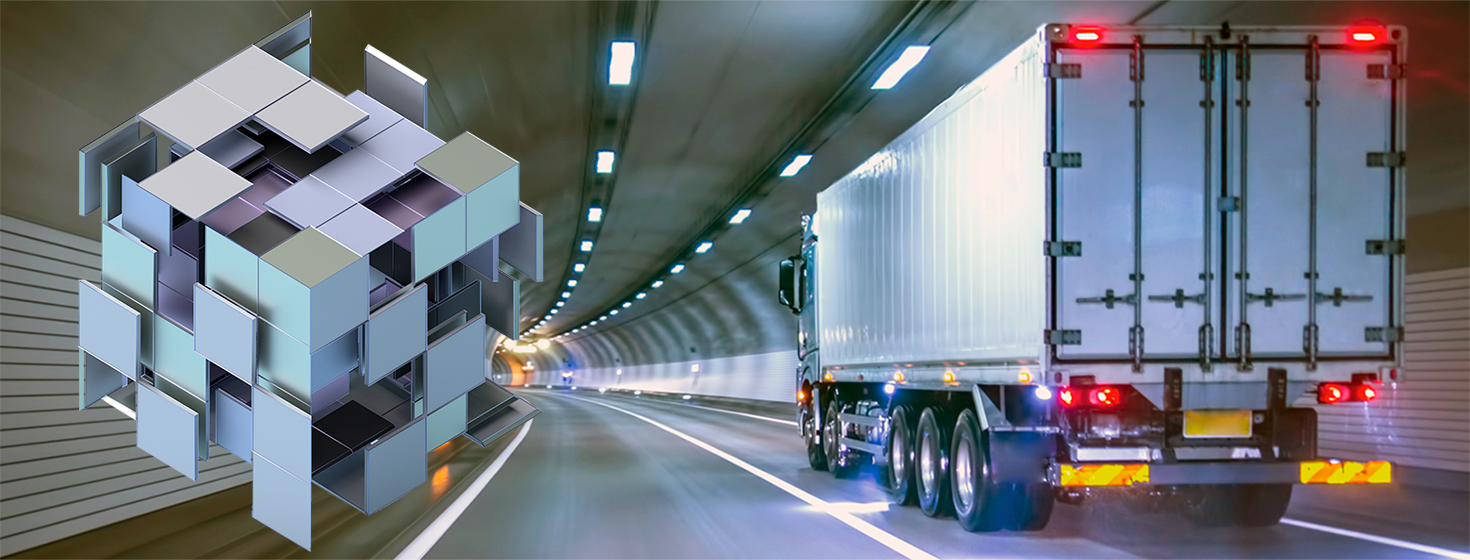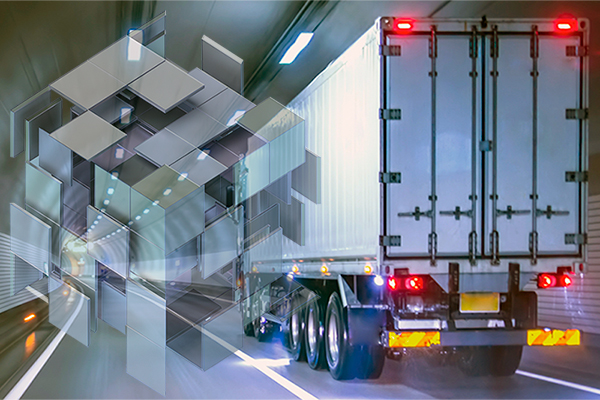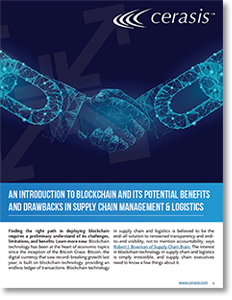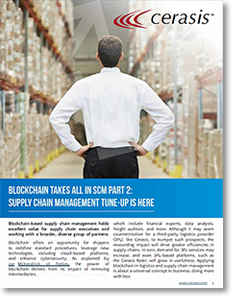Recapturing Reverse Logistics Expenses Through Blockchain

Shippers and supply chain leaders have a big opportunity to recapture lost costs through more effective reverse logistics and comprehensive, easy returns management, and by using a combined blockchain and reverse logistics strategy can help alleviate these costs.
Reverse Logistics Costs
The costs of reverse logistics amount to more than $750 billion per year, and the demand for reverse logistics has risen in recent years with the rise of e-commerce.
According to Stacy Rudolph of Business to Community, up to 30% of all products ordered online become returns, placing an insurmountable burden on reverse logistics.
Using a combined blockchain and reverse logistics strategy can help alleviate these costs, and supply chain executives need to understand a few things about it.
Reverse Logistics Carry High Risk in Supply Chain Management
Risk within reverse logistics is higher than that and forward logistics. Manufacturers and shippers have a duty to ensure sustainability, reports Supply Chain Dive, and an effective sustainability program must consider what happens to products after their lifespan.
In other words, the final resting place for products is the burden of manufacturers, and some products, such as smartphones and electronics, can pose a risk of harm to the environment and the personal information of device users.
Blockchain Offers Significant Benefits to Returns Management
Consumers are turning toward eco-conscious decisions in purchases, and blockchain technology could be the solution.
They expect manufacturers to adhere to the guidelines within the International Organization for Standardization (ISO), governing proper disposal of goods, including reclamation of raw materials and removal of personal information from electronic devices.
ISO standards are essential to effective returns management. Since products may be used before returned, the burden of ensuring the privacy of consumer data and integrity of the product falls to the manufacturer or shipper. Other products, such as those used for hygiene or personal uses, could increase the risk of cross-contamination throughout the supply chain. This is why blockchain in reverse logistics go well together.
Download the White Paper: An Introduction to Blockchain in Supply Chain Management
Blockchain technology has major implications for monitoring products at the end of their lifespan through devices connected to the Internet of things, and in the spare parts supply chain, which is part of reverse logistics, blockchain technology can be used to reduce over- and under-ordering, ensure compatibility of spare parts with items being repaired.
This is not limited to small items, and it includes major sectors of the economy, like the automotive industry. As explained by a Technavio Report, asserts Business Wire, blockchain technology can enhance the flow from information in reverse logistics, helping manufacturers understand the full cycle of their products, even after disposal. The technology also has implications for handling product recalls, especially in the food and drug sector.
Best Practices for Using Combined Blockchain and Reverse Logistics Strategies
The road to better reverse logistics is not always clear, and supply chain leaders need to understand a few best practices for implementing combined blockchain and reverse logistics strategies. These practices include:
- Identify limitations of existing systems and visibility problems within reverse logistics.
- Share information about potential savings to shareholders, as well as the impact on public image, resulting from better logistics within returns management, increasing customer service levels.
- Integrate supply chain systems into a single platform, providing a combined approach to management of product lifecycles from procurement through reclamation, recycling and disposal.
- Share plans to implement blockchain-based solutions within the supply chain and with other supply chain partners, such as suppliers or vendors.
- Outsource nonessential tasks to third-party logistics providers, freeing capital for investment into blockchain technology. In fact, the use of 3PLs rose 5% last year, reports SmartBrief, so the natural progression will be for 3PLs to begin using blockchain in their platforms as well.
- Encourage a culture of acceptance of blockchain by moving all processes into the ledger technology.
- Develop smart contracts that ensure all affected parties understand their obligations while cutting out the middleman, explains Irish Tech News. Blockchain can ease concerns over returns processes, critical for returns in stores when purchased online, as defined by the contract.
- Implement new payment processing systems, such as WireCard, which are using and developing blockchain technology to map payments thoroughly, reports com.
- Make use of blockchain technology to track returns, as well as initial orders, will increase consumer trust, even when consumers are business to business purchasers.
- Use cost savings achieved through blockchain in reverse logistics to offer free return shipping, increasing conversion of site visitors. In fact, 79% of customers want free return shipping, and 92% will make repeat purchases if returns are easy.
- Make the use of blockchain technology in returns management visible to consumers. Since 67% of shoppers check returns policies before making a purchase, this will aid in selling more product and creating hassle-free returns policies.
Act Now to Recapture Reverse Logistics Expenses Through Blockchain
Shippers and supply chain leaders have a big opportunity to recapture lost costs through more effective reverse logistics and comprehensive, easy returns management. It’s not just about saving money in returns; it’s about positive customer experiences and interactions.
Combining blockchain and reverse logistics will generate a hassle-free way of connecting existing supply chains to reverse logistics and keeping costs down for consumers.
Related Article: How Will Blockchain Ledger Technology Impact Shippers?
Related Blockchain White Papers
An Introduction to Blockchain in Supply Chain Management
In the new, exclusive, and educational resource, “An Introduction to Blockchain and Its Potential Benefits and Drawbacks in Supply Chain Management,” you will learn and understand Blockchain's role in the industry and what supply chain executives need to consider now and in the future. Download Now!
Why Blockchain will Create Extreme Supply Chain Management Optimization
This is a must read for those in the supply chain who are keeping their eye on Blockchain technology and looking for supply chain management optimization. Download Now!
How Blockchain will Aid Retailers & Shippers in Achieving Omnichannel Supply Chain Goals
This educational white paper is a must read for shippers & retailers alike to learn how blockchain can aid in achieving omnichannel supply chain goals. Download Now!
More White Papers from Cerasis
Article Topics
Cerasis News & Resources
GlobalTranz Appoints Executive Chairman Bob Farrell as Chief Executive Officer Amazon’s Drone Delivery Hits Milestone with Federal Aviation Administration Clearance Digital Supply Chain: The Landscape, Trends, Types, and the Application in Supply Chain Management Walmart’s Bid for TikTok Could Benefit the Retail Giant’s Ecommerce and Advertising Businesses The State of Ecommerce Logistics Heading into 2020 Peak Delivery Season Bringing Omnichannel to the Forefront of Ecommerce FedEx’s Fred Smith Optimistic About Economic Recovery as Ecommerce Business Booms More CerasisLatest in Transportation
FedEx Announces Plans to Shut Down Four Facilities The Two Most Important Factors in Last-Mile Delivery Most Companies Unprepared For Supply Chain Emergency Baltimore Bridge Collapse: Impact on Freight Navigating Amazon Logistics’ Growth Shakes Up Shipping Industry in 2023 Nissan Channels Tesla With Its Latest Manufacturing Process Why are Diesel Prices Climbing Back Over $4 a Gallon? More Transportation

















